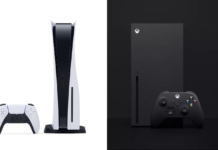Is six half-a-dozen?
Another bad habit of Crucible is its treatment of different games. All maps are not fit for all game types, as illustrated by an early update which removed Bastion and First Light, two incredibly large maps, from several playlists. Frankly, we’re in need of just such an update nowadays.
Small maps like The Anomaly, for instance, are at their best with small-scale games like Rumble and Elimination. Putting more than six players in a box makes for almost uncomfortably little elbow room, and often contradicts the team-based nature of certain game types. After all, it’s hard to estimate and follow spawn locations when both your team and the enemy are spawning all around you.

Control is another sticking point, particularly with regards to its point locations. Blind Watch, a Mars map, is the guiltiest of the bunch, and has been plagued by a clear bias in points since day one. If you spawn on C, the point closest to B, your chances of winning skyrocket because you can more easily hold two points. Point A is miles away by comparison, which makes mounting a counterattack nigh-on impossible.
Trials of Osiris, too, isn’t quite selective enough. Pantheon, a Dark Below map, is skewed in its placement of initial spawns. Suffice it to say, the point on the far right of the map—in the “orange” area, for lack of a better term—is better because it is much closer to the map’s pivotal sniper perches, meaning you get to them first. And as all snipers know, between players of equal skill, the one who scopes first wins. The same problem is present in the high ground granted to one Widow’s Court spawn, and the locked room-esque security to one Black Shield spawn.
With the addition of The Taken King, Destiny is now home to a whopping 26 Crucible maps. That’s more than enough to allow specific matchmaking queues to be pickier with their locales. There shouldn’t be five or six maps per game type, but there are a few that can be weeded out for each.
Weapons: The balancing act
Even with such a vast array of guns in play, from various raid gear and Exotics to countless miscellaneous Legendaries, Destiny has grown to follow the same short-, mid- and long-range play styles as all shooters. Ignoring the upcoming sword class of heavy weapons for the time being, there are nine weapon types available (no, sidearms don’t count; there aren’t enough of them). Thanks to the recent weapon tuning in update 2.0, most of these fill a specific role in the Crucible.

Image via Stevivor
Auto rifles, pulse rifles, hand cannons and machine guns flesh out the mid-range; fusion rifles and shotguns have short-range covered; and long-range is handled by sniper rifles, scout rifles and rockets. However, the matches aren’t perfect, though they are far better than they were in the past. Remember when auto rifles beat scout rifles at range? Yeesh. Moreover, Destiny’s past balance hiccups are instrumental when evaluating the state of its current weapon meta and predicting where it can and should go from here.
Let’s start with the granddaddy of all broken weapons, the Vex Mythoclast. Throughout the first two weeks following the opening of the Vault of Glass, owning a Mythoclast was like owning the key to Crucible. It was unstoppable, able to tie with conventional fusion rifles even when they got off a full charge. No other primary stood a chance. To bring the Mythoclast into line, Bungie reduced its base damage by 34 percent and its critical damage by roughly 25 percent.
The Mythoclast’s initial nerf would prove prophetic. Not only did this change drastically reduce the weapon’s PvP effectiveness, it ruined its PvE applications. Like a new driver swerving back into their lane, Bungie over-corrected, and wound up hurting the weapon they intended to simply nerf. The Mythoclast was eventually restored to its former glory with an attack increase, which, because PvP damage is calculated according to impact score, did not affect its Crucible prowess. This raises an interesting question regarding contextual weapon balancing, and calls into question the option of balancing weapons’ PvE and PvP stats independently. But I digress.
The story of the Mythoclast has come up countless times in Crucible’s history: whenever something rises to the top, the ban hammer brings it down. The tyranny of the Suros Regime auto rifle and excessive range of fusion rifles followed the Mythoclast’s brief reign, but quickly saw similar nerfs. Unfortunately, both Suros and virtually all fusion rifles vanished from Crucible after their respective nerfs. Why? Because other auto rifles became better at mid-range, and shotguns became better at short-range.
This is the problem with reactionary nerfing. If you always hammer the nail that sticks out, you wind up with a functional but insufferably boring plank. On its current path, Destiny will eventually be home to nine weapon classes that all deal the same damage per shot and have the same effective range, because that is the only way to ensure balance through this process. Functional isn’t fun, so reacting isn’t good enough. Absurdly overpowered weapons should be brought into line, but you can’t just nerf the best option. There will always be a best option, at least within weapon classes, and players will find it. What’s important is creating a wealth of valid options to choose from.
Keep it colorful but clean
Fortunately, Destiny has a toolbox wide enough to create any weapon it wants. In almost Borderlands fashion, the game has nonsensical guns in spades. We’re one step away from shotguns that shoot rockets, I can feel it. In any case, Destiny’s weapons, especially Exotics, have the skills necessary to break the conventional FPS mold, to create wild new variables to account for and implement. But, like most everything else, this isn’t strictly a blessing.
The trio of Exotic hand cannons is the best example here, as it exemplifies the promise and danger of Destiny’s vast collection of weapons. The Last Word, for instance, is a short-range take on a mid-range class. And after it’s nerf in update 2.0, it’s also well balanced, able to chew through enemies up close but rendered ineffective at range. The new Thorn, after its Suros-rivaling months of domination, is now a mid-range option that trades raw power for flexibility and long-range applications. This change of pace is precisely what makes Destiny’s weapons so intriguing, because it breaks up the otherwise homogenous range trifecta.
 Then there’s Hawkmoon, which was largely unaffected by update 2.0. Put bluntly, Hawkmoon is a problem. It’s also my most-used weapon, though I’ve grown fond of pulse rifles since 2.0 dropped. See, Hawkmoon is the only weapon, other than Supers, that introduces RNG into Crucible. Its ability to two-shot opponents on head based on a random damage modifier is nothing short of slipshod. When you add randomness to combat, all strategy goes out the window. When Hawkmoon applies its buff, it is nearly unbeatable. There is not a primary weapon in the game that can top a buffed Hawkmoon at medium ranges, and even long-range choices will have a tough time due to its massive range.
Then there’s Hawkmoon, which was largely unaffected by update 2.0. Put bluntly, Hawkmoon is a problem. It’s also my most-used weapon, though I’ve grown fond of pulse rifles since 2.0 dropped. See, Hawkmoon is the only weapon, other than Supers, that introduces RNG into Crucible. Its ability to two-shot opponents on head based on a random damage modifier is nothing short of slipshod. When you add randomness to combat, all strategy goes out the window. When Hawkmoon applies its buff, it is nearly unbeatable. There is not a primary weapon in the game that can top a buffed Hawkmoon at medium ranges, and even long-range choices will have a tough time due to its massive range.
When it comes to random damage, the rule of thumb is, “If it can’t happen all the time, it can’t happen ever.” In other words, if a certain outcome is too powerful even in a single instance, it cannot be allowed to occur at all. That’s how you define a range for your randomness and bring method to your madness. Hawkmoon exceeds this range and creates unfair situations.
After reloading the gun’s 13-round magazine, a Hawkmoon user has a 23 percent chance of two-shotting their next target, provided they land two headshots. If they don’t miss, or they get lucky when they do, those odds will only increase as the magazine empties. Update 2.0 removed the gun’s ability to one-hit on head—a 1 in 2,200 chance—but didn’t put a dent in the real problem.
Image via PlanetDestiny
That a primary weapon can touch on the same power problems as Supers is as impressive as it is disconcerting. Hawkmoon embodies the risks associated with Destiny’s weapons, as well as the wonders. Instead of “that pulse rifle” or “that auto rifle,” players use Red Death, Bad Juju, Hard Light and so on. The weapons have personality, and are unique and rewarding to use. Hawkmoon isn’t just some hand cannon, either. From its striking silver appearance to its distinctive sound, it stands out from the crowd.
But there is a line between creative freedom and core design that cannot be crossed if balance is to be kept intact. Destiny’s weapons, especially its Exotics, should produce more and more creative abilities, but they have to obey the rules. Bungie put it succinctly: Exotics should look, feel and sound overpowered, but never actually break the game. The only reason Hawkmoon has yet to become as big a problem as Thorn is its rarity. Give it time, and in it's current state it may very well break something.
But Exotics aren’t the only danger, which is something shotgun users know all too well. With the release of House of Wolves and the introduction of reforging, shotguns returned to, if not exceeded, the power level they held before their first well-deserved nerf. Because the weapon system failed to account for perfectly rolled weapon perks, reforged weapons took over. As a result, shotguns started killing from yards away. Again.
In all cases, a solid base is essential. Destiny’s skill trees are integral to the game and a key component of its RPG facet, but they can’t be allowed to fly off the handle. Its fantastical weapons are the highlight of its combat, and they shouldn't be brought down to conventional standards. But Destiny has to remember its origins as a shooter, and balance around that first and foremost.

Editor's Note: The following is a continuation of GameZone's "Banifest Destiny," an in-depth analysis of the year-long journey of Destiny, how it came to become the game it is today, and what to expect with the release of The Taken King as we move into Year Two. You can read Part 1 of the series, which analyzes Destiny's pre-release and launch woes, here. Part 2, which focuses on The Dark Below's failed attempt at righting the sinking ship, can be found here. Part 3, which takes a look at The House of Wolves' success, is available here.
Only now, four parts into Banifest Destiny, it occurs to me I’ve never actually explained this column’s title. It seems some are under the impression it’s a thinly veiled play on Manifest Destiny, the label given to the expansionist mentality that dominated America’s formative years. Allegedly, this would echo Destiny’s fondness for expansions such as the House of Wolves and the upcoming Taken King. That’s a pretty good idea; wish I’d thought of it. Actually, the name comes from Bungie’s habit of effectively banning weapons in Destiny’s Crucible—and absolutely nothing else, promise.
Before anything, I want to offer a bit of a disclaimer. Although anyone who’s kept up with Destiny over its first year will tell you of the mishaps discussed in the initial three parts of this column, Crucible analysis is a touchier subject. I know if I’m going to put stock in a competitive analysis of a game, I want to know it’s coming from competitive players. Now, rather than just tell you I’m a competitive Destiny player and call it a day, I thought I’d offer some brief stats on my Crucible history, just so you know what type of player this article is coming from.
According to Bungie’s internal stats, on my primary Hunter alone I have played roughly 1,360 games of Crucible and earned an average kill/death ratio of 2.54 in the process. My most-used weapons are hand cannons, sniper rifles and rocket launchers, though I have racked up several hundred kills with all weapon types. Across nearly 300 hours of Crucible play, I have logged over 30,000 kills between all three of my characters.
Basically, I don’t suck. Still, take this article with as much salt as you want.
Build-your-own shooter
Aside from the popularity of its parent genres, MMO and FPS, Destiny is a largely unprecedented game. It’s no surprise, then, that its PvP component is not without a unique appeal—its sheer diversity. The wealth of weapons and skills available to players frames a PvP scene possessed of unmatched variety, which The Taken King’s new subclasses will only further expand.
Although it is functionally identical, there’s something more personal and satisfying to tailoring your Guardian instead of fiddling with your loadout template. Maybe it’s because you’re actually focusing on a  character, or maybe it’s because you know far fewer people will be playing setups identical to yours. There’s individuality to it. Destiny’s otherwise condemned RNG is a definite factor, as there are few things more enjoyable than picking up a rare Exotic and immediately using it to shred other Guardians.
character, or maybe it’s because you know far fewer people will be playing setups identical to yours. There’s individuality to it. Destiny’s otherwise condemned RNG is a definite factor, as there are few things more enjoyable than picking up a rare Exotic and immediately using it to shred other Guardians.
Destiny has a real hook, and it has the controls and mechanics to back it up. Born of Halo’s years of refinement, Destiny’s shooting is top-shelf. It’s visceral, tight and consistent—everything a first-person shooter needs to be. But with the adoption of a new universe, of Guardians and Darkness and so on, came wild card mechanics, not all of which work well with the standard shooting foundation, at least not in a competitive format.
Nobody’s a hero
Virtually all multiplayer shooters incorporate some sort of killstreak reward. In modern shooters like Call of Duty and Battlefield, you get things like vehicles and resource drops. In Uncharted, you get special weapons and abilities. But in Destiny, you get to play God with each and every Super you activate.
Supers fill the role of catch-up mechanism and killstreak reward. They give top-level players an easy way to extend their hot streak, and struggling players a near-guaranteed way to cut down a few enemies and get out of a rut. In raids and strikes, Supers are a blast, potent one-offs that lend resounding climaxes to individual skirmishes. But in Crucible, they can be a nuisance.

Image via Twinfinite
More often than not, Supers are infallible. Many of them are impossible to effectively respond to or avoid. Golden Gun and Fist of Havoc are particularly absurd: the former will win or tie every one-on-one encounter, and with the right skills the latter is as close to invulnerability as you can get, even going so far as to quash rival Supers. This essentially introduces RNG into PvP, as encountering someone with an active or charged Super will likely lead to your death.
This leads us to the biggest problem with Supers: they’re quiet. Other than the activation sound effect and resulting kill messages, you are never given any indication of a player’s Super level. If a Bladedancer or Gunslinger is around the corner, you won’t know until you’re turned to ash. If the Titan you rush with a shotgun is sitting on a charged Fist of Havoc, you don’t know until you’re sent flying backward. The invisibility of Supers not only fosters foolhardy and frustrating situations, but misses out on the strategic aspect of approaching visibly Super-powered opponents (no pun intended) in different ways.
Supers are the most powerful abilities in the Crucible, able to turn the tide of any encounter. Yet there is no way to adequately strategize around them. You can estimate Super timers by monitoring the game clock and enemy scores, and subsequently remain cautious around suspected Supers, but that isn’t enough for something like Golden Gun, which can instantly eliminate any opponent from nearly any range. The best you can do is react, for example, by hiding from Hunter Supers or retreating from incoming Nova Bombs. If your team is bunched up in a corner, maybe keep watch for conspicuously invasive Warlocks or Titans.

In this, Supers can be detrimental to the flow of Crucible matches, which highlights the second problem with them: they’re everywhere. I regularly activate three to four Supers in Clash games, netting up to a dozen free kills in the process. Depending on the game type, you can pull out far more than that. This compounds the issue of their no-risk, high-reward design by making them more prevalent. It relegates the alleged pinnacle of Guardian power to something you can pump out like it’s nothing.
This is not always the case, which is an area where the new game type, Spark, excels. In Spark, Supers are truly valuable. Rather than a way to rack up a few kills, they are essential for attacking the enemy Rift (or base). Much the same is true for Elimination, and doubly so for Trials of Osiris. Their small-scale warfare results in far fewer Super charges, often just one per player per game, which ups their importance considerably. This makes Supers much easier to play around but simultaneously more powerful. Instead of adding to your killstreak, they can clinch an entire game.
That’s the crux of the issue: at present, for game types like Clash and Control, Supers are at once underutilized and overpowered. They are far too easy to attain and far too difficult to combat. This undermines their significance and impact, and also makes top-level matches a gamble. Better would be to adjust Super charge rates to bring these game types in line with Spark and Elimination, which utilize Supers much more elegantly.
Super shouldn’t be strictly nerfed. They should kill in one shot, and they should turn you into a God for a few glorious seconds. But they should not do so as often as they currently do, not in Crucible. Supers should be hard-earned finishers, not garden-variety spikes in power. That’s what heavy ammo is for. A healthier balance of risk and reward that ultimately reinforces just how powerful these abilities are—that would be super.
Read on for a look at map design and individualized weapon balancing.










